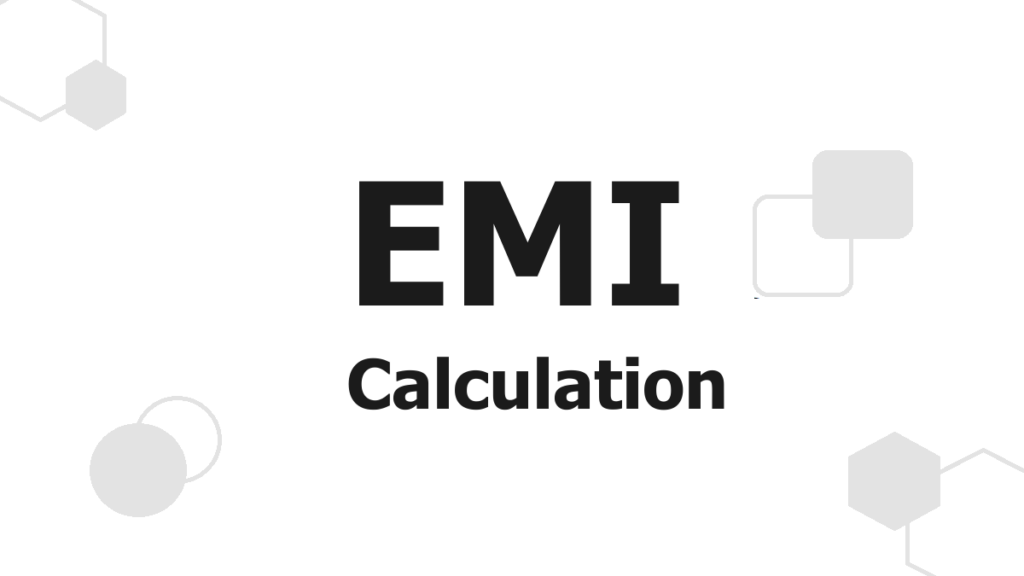Ever wondered how your monthly loan payment (EMI) is calculated? It might seem like magic, but there’s a simple formula behind those numbers.
Understanding EMI can help you make informed decisions about borrowing and managing your finances.
When you decide to take out a loan, whether it’s for a car, a house, or any other significant purchase, understanding how your Equated Monthly Installment (EMI) is calculated becomes crucial.
EMI calculation is not only important for managing your finances but also for ensuring that you choose the right loan option that fits your budget and financial goals.
What is EMI?
EMI stands for Equated Monthly Installment. It’s the fixed amount you pay towards your loan every month. This payment covers two things:
- Principal: The actual amount you borrowed.
- Interest: The cost of borrowing that money.
Importance of EMI Calculation
- Budgeting: Accurately factor your loan payment into your monthly expenses.
- Loan Comparison: Compare EMI offers from different lenders to choose the most affordable option.
- Loan Tenure: See how changing the loan tenure affects your EMI amount. A longer tenure generally means lower EMIs but higher total interest paid.

Understanding the EMI Formula
The formula used to calculate EMI is:
- EMI = P x R x (1+R)^N / ((1+R)^N – 1)
- P = The principal amount (loan amount).
- R = The monthly interest rate (annual interest rate divided by 12).
- N = The total number of EMIs (loan tenure in months).
Tips for Effective EMI Management
Managing EMIs efficiently can help borrowers avoid financial strain and pay off their loans faster. Here are some tips:
- Budgeting: Allocate a portion of your monthly income towards loan repayments.
- Making Prepayments: Whenever possible, make additional payments towards the principal amount to reduce the overall interest burden.
- Refinancing Options: Explore refinancing options to secure lower interest rates and better terms.
Tips for a Healthy EMI
- Shop around: Get quotes from multiple lenders to compare interest rates and EMIs.
- Maintain a good credit score: A higher credit score qualifies you for lower interest rates, reducing your EMI burden.
- Consider a down payment: A larger down payment reduces the principal amount, leading to lower EMIs.
Conclusion
Understanding EMI empowers you to make informed financial decisions. By using online calculators and following these tips, you can manage your loan payments effectively and achieve your financial goals.
FAQs (Frequently Asked Questions)
What is EMI?
EMI stands for Equated Monthly Installment, which is a fixed payment made by borrowers to lenders each month towards loan repayment.
How is EMI calculated?
EMI is calculated using a formula that takes into account the principal amount, interest rate, and loan tenure.
What are the types of EMI calculation methods?
The two primary methods are the Flat Interest Rate Method and the Reducing Balance Method.
Why is EMI calculation important?
EMI calculation helps borrowers plan their finances, compare loan options, and manage their debt effectively.
How can I manage my EMIs effectively?
Effective EMI management involves budgeting, making prepayments, and exploring refinancing options to reduce interest burden.